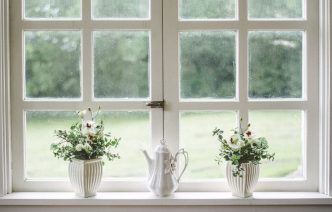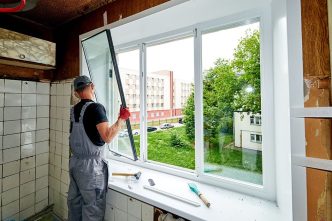Guide to Butterfly Watching
Butterflying is a popular hobby that involves observing butterflies in their natural habitats. Sitting at your window and watching butterflies flit happily from flower to flower can be a relaxing and enjoyable activity. Butterflies expend energy as they fly, so they need to feed on the nectar from flowers. If you create a place in your yard that will attract butterflies, you may be pleasantly surprised by the different butterfly species that will visit you.
Equipment Needed
Some hobbies require special equipment. Extensive equipment is not needed to observe butterflies. However, a journal and a good pair of binoculars will help ensure that you see and record the beautiful insects you observe. Some people also use special nets so they can carefully capture a butterfly for closer viewing. After taking a close look at the intricate colors and designs of the insect, you can set it free to fly away.
-
Butterfly Observation Journals: Keeping an observation journal will help you track the butterflies you see out your window.
-
Observing the Life Cycle of a Butterfly: Butterflies have a specific life cycle, which you can observe by watching them carefully.
-
Butterfly Observation Form: Use a form to record the butterflies you see in your yard or other locations.
-
Butterfly Observation Log: Download a simple observation log to keep track of the butterfly species you recognize in your yard.
-
Butterfly Observation Net: Learn how to build a butterfly net that you can use to catch, tag, and release butterflies without harming them.
-
The Life Cycle of the Butterfly (PDF): Learning about butterfly anatomy and their life cycle will help you understand these insects.
Choosing Binoculars
With a good pair of binoculars, you can bring butterflies close to you from a distance. Binoculars must be able to magnify and focus on the intricacies of butterfly wings. It’s also helpful for the binoculars to gather light with their lenses to enable you to see minute details in low-light conditions. Increased magnification may reduce clarity and field of view, so you might prefer binoculars that do not have extensive magnification powers.
-
Binoculars for Butterflying: Choosing a good pair of binoculars will help you see intricate colors and patterns of butterflies.
-
Butterfly Observation: Binoculars enable you to bring butterflies up close for viewing without disturbing them in their natural habitat.
-
Observing Butterflies: Red Admirals and Painted Ladies are two butterfly species that many people enjoy observing. Learn what you need to engage in this hobby here.
-
Watching Butterflies: Butterflies are easy to observe at any hour of the day, unlike birds, which can be easier to observe in the morning.
Etiquette and Ethics
Humane treatment of animals and insects is a priority for many people. It’s possible to observe butterflies without harming them if you remember simple etiquette and ethical conduct. Instead of capturing and collecting butterfly specimens, observe them in nature, take photographs of them, draw sketches, and release them without harm. Consider the impact of butterfly houses, too, to determine whether you wish to support these types of establishments.
-
Code of Ethics Against Butterfly Releases: When you wish to observe butterflies, find them in their natural habitat to avoid contributing to their harm.
-
Painted Lady Care: After purchasing Painted Lady larvae, follow instructions to care for them humanely.
-
A Code of Conduct for Collecting Insects and Other Invertebrates: Etiquette when collecting insects includes not taking more than you need and photographing instead of removing them whenever possible.
-
Not to Harm a Fly: Our Ethical Obligations to Insects: Explore ethics in connection with insect observation and collecting.
-
The Butterfly House Industry: Conservation Risks and Education Opportunities: Butterfly houses can educate the public about butterflies, but they may present ethical concerns about butterfly treatment.
Location and Habitat
Butterflies are attracted to environments with group plantings of bright flowers. Butterflies tend to prefer plants that are natural to an environment. When creating a butterfly habitat, choose a sunny area that is sheltered from the wind. Provide butterflies with a source of water and areas for landing and resting in the sun. Avoid using chemicals and pesticides in a butterfly habitat. Butterflies will remain active throughout the day to visit a habitat.
-
Butterfly Gardens: When you wish to have a front-row seat from your window for butterfly viewing, plant a butterfly garden.
-
Butterfly Habitat Garden: Growing plants that are found naturally in a location is one important way to attract butterflies.
-
Creating Attractive Butterfly Habitats: A butterfly habitat should have natural plants, protection from the wind, and an absence of chemical pesticides.
-
Creating a Butterfly Habitat (PDF): Creating a butterfly habitat can be an effective way to help preserve threatened butterfly species.
-
Butterfly Habitat Gardening: Adding a large, flat rock to a butterfly habitat can give them a place to rest in the sun.
-
Creating a Butterfly Habitat: How to Attract Butterflies to Your Backyard: A sunny location with protection from the wind can be the ideal place for a butterfly habitat.
-
An Introduction to Butterfly Watching (PDF): Explore the activity of butterflying to find out how to observe these insects.
-
Butterflies and How to Attract Them: Plants with bright colors such as orange, red, yellow, pink, and purple attract butterflies.
Identification
After learning the basics of butterfly anatomy, you can begin trying to identify the species you see. Field guides are available with descriptions and photos of butterflies, useful for identifying different insects. Take photos of butterflies you see to enable you to identify them later. Many butterfly observers keep a journal of butterflies seen and the dates to record their butterflying activities.
-
Interactive List of American Butterfly Names: Click butterflies in this list to learn about different butterfly species.
-
Practice With Butterfly Identification: Identifying butterflies requires noting their size, sketching their appearance, and describing their features.
-
Butterfly Identification: Use this tool to enter features of butterflies for help identifying them.
-
Identify a Butterfly, Moth, or Caterpillar: Take a photograph of a butterfly and use it to determine the species of the insect.
-
Identify a Butterfly: This website enables visitors to enter information about a butterfly to identify it.
-
Butterfly Identification Chart (PDF): View photographs on this chart to help you identify butterflies.
-
Identification of Common Butterflies: The National Park Service offers this resource that can help to identify butterflies.
-
Learn All About Butterflies: Click each link to different butterflies on this Web page to see identification cards for each species.
-
Species Identification Guide: Explore various butterfly species in this interactive guide.
-
Butterfly Identification Chart: Check this butterfly identification chart for help identifying butterflies you see outside.
| Wood Windows and Doors | Additional Window Options | Home Services |
|---|---|---|


